Getting Around, Namibia Travel, Transport and Car Rental
(Namibia, NA, Southern Africa)
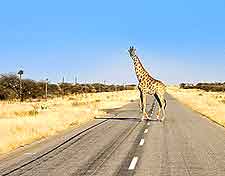
Most visitors to Namibia aim to spend much of their stay exploring outside of Windhoek. Travel options are numerous, including public transport services. Whilst these offer good value, it has to be said that they are of limited use to tourists who are in Namibia for a short time.
The most convenient and quickest way to get around Namibia is to either follow your own self-drive itinerary or book on a tailor-made tour organised by a local operator. Border crossings (Angola,
Botswana,
South Africa and Zambia) will usually require the necessary travel permits and documentation.
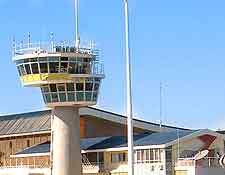
Windhoek Hosea Kutako International Airport (WDH) / Arriving by Air
Address: Detmont / Ondekaremba Kleinsiedlung, B6, Namibia, NA, Africa
Tel: +264 061 295 5000
The majority of visitors to Namibia will find themselves in the arrivals hall of the Hosea Kutako International Airport. This airport is located 42 km / 26 miles to the east of central Windhoek and functions as the country's biggest transport facility, serving close to one million passengers annually. A handful of different airlines operate here, flying between destinations such as Accra,
Cape Town,
Frankfurt,
Johannesburg, Lusaka, Victoria Falls and Walvis Bay.
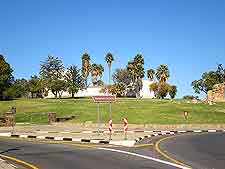
Other travellers may well find themselves using Eros Airport, located within Windhoek itself, which operates shorter-haul and domestic flights. Domestic flights also operate between airports at Walvis Bay, Swakopmund, Luderitz and Mpacha.
Of note, the most heavily used airports in Namibia are as follows:
- Arandis Airport (ADI) - Arandis
- Eros Airport (ERS) - Windhoek
- Grootfontein Airport (GFY) - Grootfontein
- Halali Airport (HAL) - Halali
- Karasburg Airport (KAS) - Karasburg
- Katima Mulilo Airport (Mpacha Airport) (MPA) - Katima Mulilo
- Keetmanshoop Airport (KMP) - Keetmanshoop
- Luderitz Airport (LUD) - Luderitz
- Mokuti Lodge Airport (OKU) - Mokuti Lodge
- Namutoni Airport (NNI) - Namutoni
- Okaukuejo Airport (OKF) - Okaukuejo
- Omega Airport (OMG) - Omega
- Ondangwa Airport (OND) - Ondangwa
- Opuwa Airport (OPW) - Opuwa
- Oranjemund Airport (OMD) - Oranjemund
- Oshakati Airport (OHI) - Oshakati
- Rundu Airport (NDU) - Rundu
- Swakopmund Airport (SWP) - Swakopmund
- Tsumeb Airport (TSB) - Tsumeb
- Walvis Bay Airport (WVB) - Walvis Bay
- Windhoek Hosea Kutako International Airport (WDH) - Windhoek
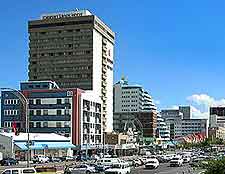
Car Rental
Hiring a car is a sensible way to get around Namibia. With your own transport at your disposal, you have the freedom to visit any wildlife reserve or attraction you choose. In general, the roads are in a good condition. The main roads are sealed tarmac and minor roads tend to be gravel, rather than just earth.
The only downside is that, if you are planning to stay in Namibia for any length of time, hiring a car for the whole length of your stay can be prohibitively expensive. In this case, it may be worth just hiring a car for specific day trips, using public transport for the rest of your stay. Another way of cutting travel costs is to hire a car in one city and drop it off in another.
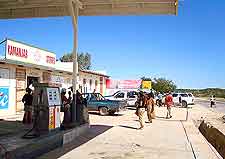
Cars can be hired from most major rental firms, as well as from a handful of small local companies. Visitors should be aware that while these companies may work out a little cheaper, they may not have the same back-up support as their larger competitors, something that you might regret if you break down or get into difficulties on your travels. Two-wheel drive vehicles are perfectly adequate to negotiate most of Namibia's roads. However, if you are travelling during the 'rainy season', between January and March, then it is worth considering a four-wheel drive (4WD) vehicle. Those bringing a foreign-registered vehicle into the country will find it necessary to buy an inexpensive road-use tax certificate when arriving at the border.
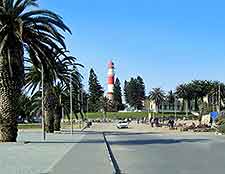
Buses and Coaches
Local bus services in Namibia are few and far between. Some services are run by the company that operates Namibia's trains, TransNamib, mainly to replace defunct rail services. A lodge shuttle bus operates from Windhoek or Swakopmund, and connects the Namib-Naukluft Lodge at Solitaire.
As far as coaches are concerned, Intercape Mainliner offers direct overnight services from Windhoek to Cape Town in South Africa. Other long-distance coach services have destinations of Johannesburg, Botswana and Zambia.
Trains
Namibia's rail network is operated by TransNamib Railways and connects a number of the country's main towns and cities. A limited service of day time and night-time trains runs between Windhoek, Keetmanshoop and Upington (in South Africa). Whilst such train services are reasonably comfortable, visitors on a tight itinerary may find that the speed of African rail travel is rather too sedate for their liking.
The evocatively named Desert Express has a twice-weekly rail service between Windhoek's old and very elegant Railway Station and Swakopmund. Specially designed for tourists, the Desert Express provides air-conditioned cabins, en-suite facilities and a chance to see fantastic desert sunsets. Feeding lions and tramping up desert sand dunes along the way make this a perfect holiday treat.
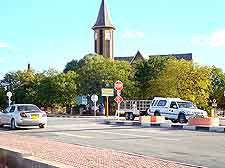
Taxis
Visitors can get around larger cities, such as Windhoek and Swakopmund, by private taxi. It is most sensible to reserve a taxi in advance, rather than trying to hail one on the street.
For travelling between towns, minibus taxis known as 'combies' are a reasonable option. These operate from taxi ranks, with each rank offering departures to different towns. The downside is that combies tend to operate only on busier routes, so if you are looking to visit a more remote location, it may be hard to find one going your way.
 Most visitors to Namibia aim to spend much of their stay exploring outside of Windhoek. Travel options are numerous, including public transport services. Whilst these offer good value, it has to be said that they are of limited use to tourists who are in Namibia for a short time.
Most visitors to Namibia aim to spend much of their stay exploring outside of Windhoek. Travel options are numerous, including public transport services. Whilst these offer good value, it has to be said that they are of limited use to tourists who are in Namibia for a short time.
 Other travellers may well find themselves using Eros Airport, located within Windhoek itself, which operates shorter-haul and domestic flights. Domestic flights also operate between airports at Walvis Bay, Swakopmund, Luderitz and Mpacha.
Other travellers may well find themselves using Eros Airport, located within Windhoek itself, which operates shorter-haul and domestic flights. Domestic flights also operate between airports at Walvis Bay, Swakopmund, Luderitz and Mpacha.
 Cars can be hired from most major rental firms, as well as from a handful of small local companies. Visitors should be aware that while these companies may work out a little cheaper, they may not have the same back-up support as their larger competitors, something that you might regret if you break down or get into difficulties on your travels. Two-wheel drive vehicles are perfectly adequate to negotiate most of Namibia's roads. However, if you are travelling during the 'rainy season', between January and March, then it is worth considering a four-wheel drive (4WD) vehicle. Those bringing a foreign-registered vehicle into the country will find it necessary to buy an inexpensive road-use tax certificate when arriving at the border.
Cars can be hired from most major rental firms, as well as from a handful of small local companies. Visitors should be aware that while these companies may work out a little cheaper, they may not have the same back-up support as their larger competitors, something that you might regret if you break down or get into difficulties on your travels. Two-wheel drive vehicles are perfectly adequate to negotiate most of Namibia's roads. However, if you are travelling during the 'rainy season', between January and March, then it is worth considering a four-wheel drive (4WD) vehicle. Those bringing a foreign-registered vehicle into the country will find it necessary to buy an inexpensive road-use tax certificate when arriving at the border.










